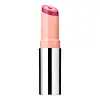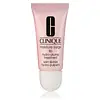Clinique Moisture Surge Pop Triple Lip Balm Versus Clinique Moisture Surge Lip Hydro-Plump Treatment
What's inside
What's inside
 Key Ingredients
Key Ingredients

 Benefits
Benefits

 Concerns
Concerns

 Ingredients Side-by-side
Ingredients Side-by-side

Octyldodecanol
EmollientSynthetic Fluorphlogopite
Pentaerythrityl Adipate/Caprate/Caprylate/Heptanoate
EmollientPetrolatum
EmollientBis-Diglyceryl Polyacyladipate-2
EmollientPolyethylene
AbrasiveHydrogenated Dilinoleyl Alcohol
EmollientStearoxymethicone/Dimethicone Copolymer
EmollientSilica
AbrasivePolybutene
Microcrystalline Wax
Emulsion StabilisingEthylhexyl Palmitate
EmollientCalcium Sodium Borosilicate
Sodium Hyaluronate
HumectantButyrospermum Parkii Butter
Skin ConditioningPolyglyceryl-4 Isostearate
EmulsifyingLauryl PCA
HumectantAloe Barbadensis Leaf Extract
EmollientCocos Nucifera Oil
MaskingOlea Europaea Fruit Extract
BleachingPalmitoyl Tetrapeptide-7
Skin ConditioningPalmitoyl Tripeptide-1
Skin ConditioningCetyl PEG/PPG-10/1 Dimethicone
EmulsifyingTocopheryl Acetate
AntioxidantCholesterol
EmollientGlycerin
HumectantGlyceryl Stearate
EmollientCaprylyl Glycol
EmollientLinoleic Acid
CleansingC20-40 Pareth-10
EmulsifyingButylene Glycol
HumectantWater
Skin ConditioningHydroxyethylcellulose
Emulsion StabilisingEthylcellulose
Methyl Glucose Sesquistearate
EmollientTriticum Vulgare Bran Extract
Skin ConditioningHexylene Glycol
EmulsifyingTriethoxycaprylylsilane
Palmitic Acid
EmollientOleic Acid
EmollientSilica Dimethyl Silylate
EmollientTin Oxide
AbrasivePotassium Sulfate
Hexyl Laurate
EmollientCalcium Aluminum Borosilicate
Alumina
AbrasiveCarbomer
Emulsion StabilisingPolysorbate 20
EmulsifyingLauryl Methacrylate/Glycol Dimethacrylate Crosspolymer
Phenoxyethanol
PreservativeMica
Cosmetic ColorantCI 77891
Cosmetic ColorantCI 77491
Cosmetic ColorantCI 77492
Cosmetic ColorantCI 77499
Cosmetic ColorantCI 15850
Cosmetic ColorantCI 45410
Cosmetic ColorantCI 42090
Cosmetic ColorantCI 17200
Cosmetic ColorantCI 19140
Cosmetic ColorantCI 77742
Cosmetic ColorantCI 45380
Cosmetic ColorantCI 73360
Cosmetic ColorantCI 75470
Cosmetic ColorantCI 77163
Cosmetic ColorantCI 15985
Cosmetic ColorantCI 45370
Cosmetic ColorantOctyldodecanol, Synthetic Fluorphlogopite, Pentaerythrityl Adipate/Caprate/Caprylate/Heptanoate, Petrolatum, Bis-Diglyceryl Polyacyladipate-2, Polyethylene, Hydrogenated Dilinoleyl Alcohol, Stearoxymethicone/Dimethicone Copolymer, Silica, Polybutene, Microcrystalline Wax, Ethylhexyl Palmitate, Calcium Sodium Borosilicate, Sodium Hyaluronate, Butyrospermum Parkii Butter, Polyglyceryl-4 Isostearate, Lauryl PCA, Aloe Barbadensis Leaf Extract, Cocos Nucifera Oil, Olea Europaea Fruit Extract, Palmitoyl Tetrapeptide-7, Palmitoyl Tripeptide-1, Cetyl PEG/PPG-10/1 Dimethicone, Tocopheryl Acetate, Cholesterol, Glycerin, Glyceryl Stearate, Caprylyl Glycol, Linoleic Acid, C20-40 Pareth-10, Butylene Glycol, Water, Hydroxyethylcellulose, Ethylcellulose, Methyl Glucose Sesquistearate, Triticum Vulgare Bran Extract, Hexylene Glycol, Triethoxycaprylylsilane, Palmitic Acid, Oleic Acid, Silica Dimethyl Silylate, Tin Oxide, Potassium Sulfate, Hexyl Laurate, Calcium Aluminum Borosilicate, Alumina, Carbomer, Polysorbate 20, Lauryl Methacrylate/Glycol Dimethacrylate Crosspolymer, Phenoxyethanol, Mica, CI 77891, CI 77491, CI 77492, CI 77499, CI 15850, CI 45410, CI 42090, CI 17200, CI 19140, CI 77742, CI 45380, CI 73360, CI 75470, CI 77163, CI 15985, CI 45370
Petrolatum
EmollientPolybutene
Polyglyceryl-2 Triisostearate
EmulsifyingHydrogenated Polyisobutene
EmollientTocopheryl Acetate
AntioxidantPvp
Emulsion StabilisingSilica
AbrasiveHydrogenated Castor Oil
EmollientPPG-51/Smdi Copolymer
Caprylic/Capric/Myristic/Stearic Triglyceride
EmollientButyrospermum Parkii Butter
Skin ConditioningSea Whip Extract
Skin ConditioningCeramide Ng
Skin ConditioningCholesterol
EmollientAstrocaryum Murumuru Seed Butter
EmollientCaprylic/Capric Triglyceride
MaskingEthylene/Propylene/Styrene Copolymer
C12-16 Alcohols
EmollientTetrahexyldecyl Ascorbate
AntioxidantButylene/Ethylene/Styrene Copolymer
Caprylyl Glycol
EmollientPalmitic Acid
EmollientHydrogenated Lecithin
EmulsifyingPetrolatum, Polybutene, Polyglyceryl-2 Triisostearate, Hydrogenated Polyisobutene, Tocopheryl Acetate, Pvp, Silica, Hydrogenated Castor Oil, PPG-51/Smdi Copolymer, Caprylic/Capric/Myristic/Stearic Triglyceride, Butyrospermum Parkii Butter, Sea Whip Extract, Ceramide Ng, Cholesterol, Astrocaryum Murumuru Seed Butter, Caprylic/Capric Triglyceride, Ethylene/Propylene/Styrene Copolymer, C12-16 Alcohols, Tetrahexyldecyl Ascorbate, Butylene/Ethylene/Styrene Copolymer, Caprylyl Glycol, Palmitic Acid, Hydrogenated Lecithin
 Reviews
Reviews

Ingredients Explained
These ingredients are found in both products.
Ingredients higher up in an ingredient list are typically present in a larger amount.
This ingredient is also known as shea butter. It is an effective skin hydrator and emollient.
Emollients help soothe and soften your skin. It does this by creating a protective film on your skin. This barrier helps trap moisture and keeps your skin hydrated. Emollients may be effective at treating dry or itchy skin.
Shea butter is rich in antioxidants. Antioxidants help fight free-radicals, or molecules that may harm the body. It is also full of fatty acids including stearic acid and linoleic acid. These acids help replenish the skin and keep skin moisturized.
While Shea Butter has an SPF rating of about 3-4, it is not a sunscreen replacement.
Shea butter may not be fungal acne safe. We recommend speaking with a professional if you have any concerns.
Learn more about Butyrospermum Parkii ButterCaprylyl Glycol is a humectant and emollient, meaning it attracts and preserves moisture.
It is a common ingredient in many products, especially those designed to hydrate skin. The primary benefits are retaining moisture, skin softening, and promoting a healthy skin barrier.
Though Caprylyl Glycol is an alcohol derived from fatty acids, it is not the kind that can dry out skin.
This ingredient is also used as a preservative to extend the life of products. It has slight antimicrobial properties.
Learn more about Caprylyl GlycolCholesterol is a class of organic molecules called lipids. It helps hydrate your skin and is essential to having a healthy skin barrier.
Our skin naturally contains cholesterol in the outermost layer. Besides cholesterol, it also contains ceramides and fatty acids. Cholesterol makes up about 1/4 of your skin's outer layer and barrier. Your skin barrier is responsible for keeping allergens and microbes out. Having a healthy skin barrier is also responsible for keeping your skin firm and plump.
Our bodies use cholestrol to create vitamin D, steroid hormones, and more.
Learn more about CholesterolPalmitic Acid is a fatty acid naturally found in our skin and in many plant and animal sources. In cosmetics, it is usually derived from palm oil. It serves many purposes in skincare, acting as a cleanser, emollient, and emulsifier.
As an emollient, palmitic acid helps soften and smooth the skin by preventing water loss. In cleansers, it helps remove oil and dirt while creating foam.
Its emulsifying properties help stabilize products by keeping water and oil-based ingredients from separating.
This may not be suitable for fungal acne-prone skin, as fatty acids like this can sometimes trigger breakouts in sensitive individuals.
Learn more about Palmitic AcidPetrolatum is more commonly known as petroleum jelly. It is created by mixing waxes and mineral oils.
This ingredient is effective at reducing water loss by 99%. This is because it is an occlusive. Occlusives create a hydrophobic barrier on the skin to prevent evaporation. This property makes it great for hydrating dry skin.
Pro tip: Use occlusives, such as this ingredient, on damp skin for the best results.
The quality or origin of petrolatum is only known when disclosed by the brand. Most cosmetic petrolatum has gone through several purification stages.
Another benefit of occlusives is it protects your skin against infection or allergies.
Petrolatum may not be safe for fungal-acne. Studies show mineral oil / petroleum leads to the growth of M. Furfur, a type of yeast.
Learn more about PetrolatumPolybutene is used to help control the viscosity of a product. This just means it helps adjusts the texture.
It is a polymer and does not get absorbed into the skin due to its large size.
Studies found this ingredient did not irritate skin in concentrations below 15%.
Learn more about PolybuteneSilica, also known as silicon dioxide, is a naturally occurring mineral. It is used as a fine, spherical, and porous powder in cosmetics.
Though it has exfoliant properties, the function of silica varies depending on the product.
The unique structure of silica enhances the spreadability and adds smoothness, making it a great texture enhancer.
It is also used as an active carrier, emulsifier, and mattifier due to its ability to absorb excess oil.
In some products, tiny microneedles called spicules are made from silica or hydrolyzed sponge. When you rub them in, they lightly polish away dead skin layers and enhance the penetration of active ingredients.
Learn more about SilicaTocopheryl Acetate is AKA Vitamin E. It is an antioxidant and protects your skin from free radicals. Free radicals damage the skin by breaking down collagen.
One study found using Tocopheryl Acetate with Vitamin C decreased the number of sunburned cells.
Tocopheryl Acetate is commonly found in both skincare and dietary supplements.
Learn more about Tocopheryl Acetate